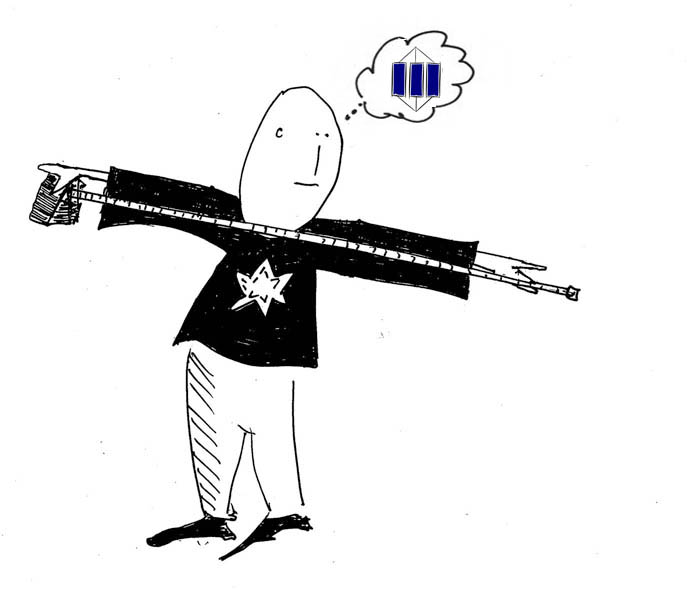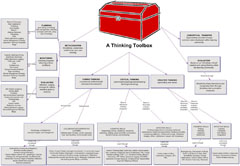SOLO based approaches and effective strategies
| (2 intermediate revisions by one user not shown) | |||
| Line 1: | Line 1: | ||
| − | [[File:MeasuringLearningOutcomes resized.jpg |left]]When schools create a “thinking toolbox” of skills and dispositions, they risk teaching for the knowing of thinking, rather than the understanding of thinking. (For an example of a thinking toolbox click on thumbnail below - from [http://www.nzcer.org.nz/nzcerpress/curriculum-matters/curriculum-matters-2-2006 Hook, P. (2006). A Thinking Curriculum. Curriculum Matters NZCER Press, Volume 2 p83.)] | + | [[File:MeasuringLearningOutcomes resized.jpg |left]]When schools create a “thinking toolbox” of skills and dispositions, they risk teaching for the knowing of thinking, rather than the understanding of thinking. (For an example of a thinking toolbox click on thumbnail below - adapted from [http://www.nzcer.org.nz/nzcerpress/curriculum-matters/curriculum-matters-2-2006 Hook, P. (2006). A Thinking Curriculum. Curriculum Matters NZCER Press, Volume 2 p83.)] To teach for the understanding of thinking, schools must create learning environments where the thinking and ICT interventions are used to enhance the conditions of value for different learning outcomes. Purposeful use of thinking and ICT interventions can only occur in environments where learning outcomes can be analysed and improved, and where pedagogies for reflection, pattern recognition, and connection, are encouraged. |
{{file thumbnail|Thinking_Toobox_2004_Thumbnail|Thinking_Toobox_2004|jpg|jpg|left}} | {{file thumbnail|Thinking_Toobox_2004_Thumbnail|Thinking_Toobox_2004|jpg|jpg|left}} | ||
| − | + | The meta language for learning from The Structure of Observed Learning Outcome (SOLO) model (Biggs and Collis, 1998) allows schools to teach for this understanding of thinking. The five levels of learning outcome in SOLO (prestructural, unistructural, multistructural, relational, extended abstract) enables the thinking toolbox to be classified against different complexities of learning outcomes rather than against critical, creative and caring thinking outcomes. | |
For an example of this approach see [[File:HOT SOLO Coded Thinking Interventions.pdf]] | For an example of this approach see [[File:HOT SOLO Coded Thinking Interventions.pdf]] | ||
| Line 44: | Line 44: | ||
| [[SOLO Odd one out]] | | [[SOLO Odd one out]] | ||
| [[SOLO Whoosh]] | | [[SOLO Whoosh]] | ||
| − | | | + | | [[SOLO Comparative Analysis Template]] |
|- | |- | ||
| | | | ||
Latest revision as of 04:17, 4 July 2014
When schools create a “thinking toolbox” of skills and dispositions, they risk teaching for the knowing of thinking, rather than the understanding of thinking. (For an example of a thinking toolbox click on thumbnail below - adapted from Hook, P. (2006). A Thinking Curriculum. Curriculum Matters NZCER Press, Volume 2 p83.) To teach for the understanding of thinking, schools must create learning environments where the thinking and ICT interventions are used to enhance the conditions of value for different learning outcomes. Purposeful use of thinking and ICT interventions can only occur in environments where learning outcomes can be analysed and improved, and where pedagogies for reflection, pattern recognition, and connection, are encouraged.The meta language for learning from The Structure of Observed Learning Outcome (SOLO) model (Biggs and Collis, 1998) allows schools to teach for this understanding of thinking. The five levels of learning outcome in SOLO (prestructural, unistructural, multistructural, relational, extended abstract) enables the thinking toolbox to be classified against different complexities of learning outcomes rather than against critical, creative and caring thinking outcomes. For an example of this approach see File:HOT SOLO Coded Thinking Interventions.pdf
Using SOLO levels to differentiate learning outcomes can be applied to any approach and or strategy used for thinking - enabling both teachers and students to better target support for specific learning outcomes. Refer examples in the table below.

